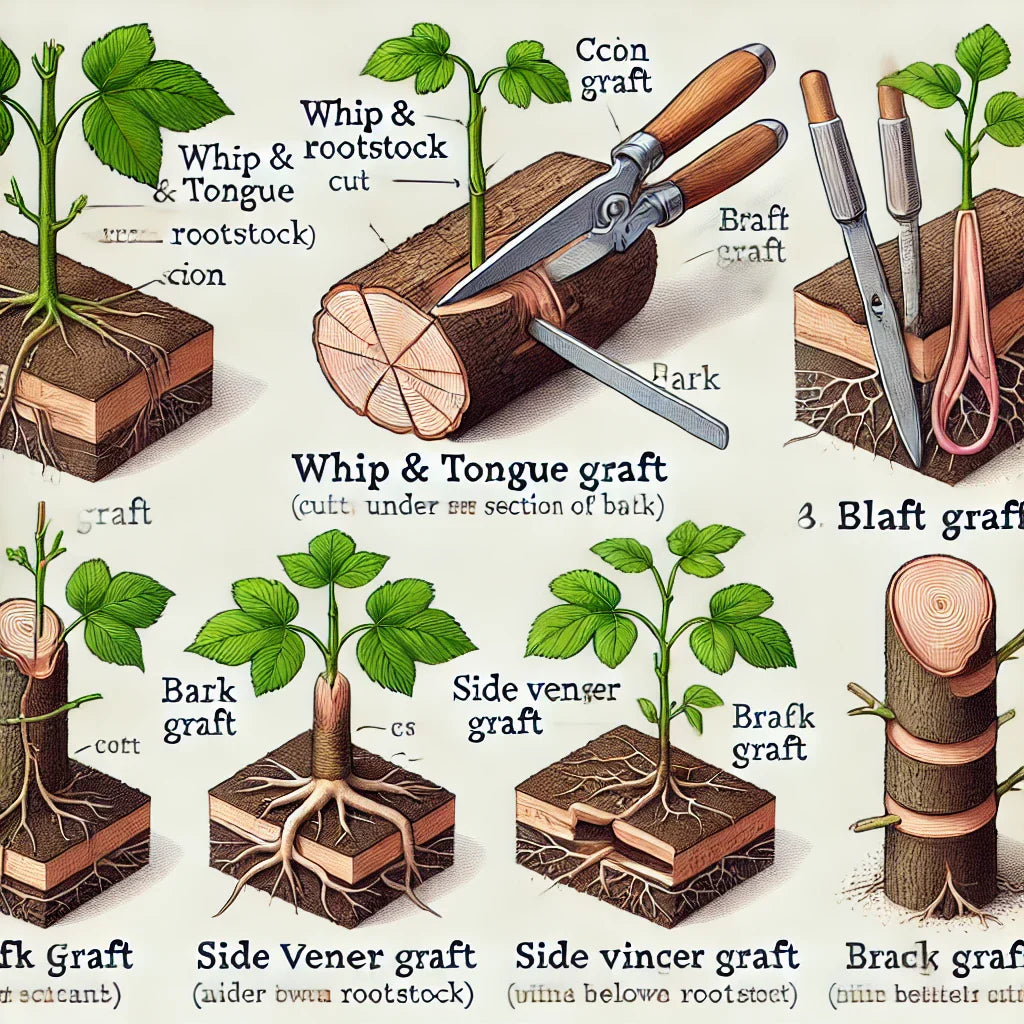
The Art of Grafting: How I Transformed My Orchard, One Tree at a Time
When I started grafting trees about four years ago, I had no idea what I was doing. I had planted my orchard with a variety of fruit trees, but the idea of customizing them combining different varieties on a single tree was both fascinating and intimidating.
After years of experimenting, I’ve grafted everything from apples to loquats and feel a real connection to the process. It’s a whole new ball game when you look at a tree you grafted and realize just how much of a nature hack it is.
Grafting can be simple yet frustrating, but once you get the hang of it, it hits your inner reward system in a strange way. I love grabbing a stick from one part of my orchard and walking over to where hundreds of cherry trees are growing from seed. The section line to the south of my farm is filled with old-growth cherry trees. It was a calling of some sort.

My first successful graft was with a Rainier cherry scionwood. I cut a small cherry sapling down, carefully split the stump with my knife, and slammed the Rainier cherry scionwood right in. It didn’t fit like a glove, but it was good enough for me. Seeing it fuse a few weeks later and start growing was made me smile, I was hooked.
One of the coolest things about grafting is the ability to create multi-variety trees. Imagine picking different kinds of cherries from a single tree or, even better, grafting multiple stone fruits onto one rootstock. It’s not just a theory, you can have almonds, plums, apricots, peaches, and nectarines all growing on the same tree. In fact, artist and horticulturist Sam Van Aken even created a tree with 40 different stone fruit varieties (check it out here: CNN).

There are many different ways to graft including.
- Whip and Tongue Grafting: Ideal for young trees or thin branches, using interlocking diagonal cuts for a secure fit.
- Cleft Grafting: A V-shaped cut in a larger rootstock holds the smaller scion.
- Bark Grafting: The scion is inserted under loosened bark, best done after active growth.
- Bridge Grafting: Used to repair damaged trunks by connecting healthy tissue above and below the wound.
- Budding: A single bud with bark is placed into a cut on the rootstock.
- Approach Grafting: Two plants grow together by aligning their cambiums while still attached to their roots.
Don't let that intimidate you though, just pick one and soon you'll realize its all kind of the same thing.
Grafting lets you tweak trees to your specifications, creating something you can make your friends think your real smart. There’s nothing quite bighting into fruit from a tree you’ve shaped yourself. If you’ve ever thought about trying it, I encourage you to grab a knife, some rootstock, and a scion, and give it a shot. You might just surprise yourself. Just make sure you have a sharp knife, oh and gloves. You certainly don't want to fuse your hand to the tree.
